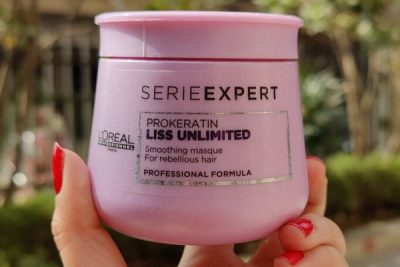The hair industry is developing more and more, thereby producing many “unique” hair colors to serve customers’ needs. There are many fashionable and extremely eye-catching hair dyes, such as ombre hair, highlighting,… However, for your hair to get the correct color like the pictures you see on the internet, you need to go through the stage is to remove the original hair color.

30 kg of blonded and other colors of hair from Russian Customer
K-Hair, a reliable hair warehouse worldwide, usually provides bleached hair with color # 613 so that customers can easily dye their favorite color. Alternatively, you can order from K-Hair with a picture of your desired hair color.
1. First of all, what is hair bleaching?
Bleaching removes melanin in the hair with specialized chemicals to make the hair lose its original color. Melanin is known to be the melanin that gives hair, skin, and eyes color.
When melanin is lost, the hair will turn white or gray, and this is the condition for bright dyed colors such as platinum, smoky gray, etc. to be colored. The darker the hair, the more concentrated bleach will be required, and the longer it will need to stay on the nose to lose the color completely.
Typically, the typical black/brown hair of Vietnamese people will have to undergo an average of 2 hair bleaches to be eligible to dye light hair.
2. What is the problem with hair after being bleached?
The bleaching progress damages the raw hair: hair becomes weak, dull, dry, extremely fragile, and more sensitive to environmental hazards such as ultraviolet rays, moisture. , etc.
However, if the real hair is 100% from humans, the effect on hair will be less than that of synthetic or mixed hair. Because if it is synthetic hair, the cuticle is always not aligned. Check the K-hair quality of the hairs after bleaching progress.

Photos of bleached hair in K-Hair
3. How to protect bleached hair from chlorine?
Chlorine is a constant in the life of all swimmers. It’s our perfume and it enables us to swim in clean water.
But this chemical disinfectant has some downsides, too, and a big one is how it can strip hair dye and leave your glorious mane looking faded and feeling dry and straw-like.
The color-changing impact of chlorine can vary from pool to pool and hair color to hair color. For example, if you dye your hair red, it’s a notoriously difficult color to keep intact long term even if you aren’t a swimmer, so you’ll likely see fading faster than you would with darker colors.
And of course, many natural and bottle blondes have a horror story about swimming in a pool with improperly balanced chemicals and coming out with green hair. (If that happens it means the copper content in the pool is too high; most water sources have copper in them, and when you add chlorine, it can oxidize the copper and other hard-water minerals. These minerals then saturate your hair, turning it green-ish. Stripping those chemicals from the hair is the key to getting back to that icy blonde or foxy silver color you’d prefer.)
For decades, swimmers have been looking for hair coloring products that don’t fade when exposed to chlorine. But it’s an ongoing quest—the truth of the matter is, there really aren’t any hair coloring products that are completely chlorine-proof. But that doesn’t mean it’s hopeless if you want to swim regularly and keep your hair looking amazing. Here’s how to minimize the effects of chlorine on colored hair:
- Protect your locks. Prior to jumping in the pool, wet your hair with clean, cool water. When the hair is wet, it can’t absorb as much chlorinated water from the pool, which will limit the effect of the chlorine. Cool water helps close the hair’s cuticle, which can further help lock out pool water and chemicals.
- Coat with conditioner. In addition to wetting your hair, you may also want to apply a pre-swim conditioner, such as Nature’s Prescription, to your hair before you get into the pool. This further blocks the pool chemicals from being able to infiltrate your luscious locks and wreck your ‘do.
- Wear a cap. Swim caps are a must when racing, but in training, some swimmers with short hair skip the cap to keep cooler. A swim cap, however, creates a physical barrier between your hair and the pool water, reducing the exposure to chlorine. It’ll also make you sleeker and a little faster in the water and keep your bangs out of your eyes. Caps don’t generally keep your hair dry, but they can reduce how much chlorine soaks in, especially when used with tips 1 and 2.
- Rinse immediately. As soon as you get out of the pool, rinse your hair thoroughly with clean water to remove any chlorine residue. Even better, use a chlorine-removing or clarifying shampoo, such as those made by TRISWIM and Zealios.
- Deep condition. Chlorine can be very drying, so to keep your hair looking shiny and healthy, use a deep conditioning treatment or hair mask regularly to restore that lost moisture. Nourishing and hydrating your hair can also help reduce the appearance of color-fading.
- Seek UV protection. Although chlorine can be tough on your hair, it’s not the only factor that can affect hair color. Sun exposure can also cause fading. To prevent this, reach for hair products or sprays that offer UV protection.
For Masters swimmers who are frequenting the pool most days of the week, it’s inevitable that you’ll experience some color fading over time, even if you’re taking as many of these precautions as possible. If it’s bothering you, talk with your hair colorist for more specific advice tailored to your unique hair needs and color goals.
4. How to protect bleached hair from salt water?
Protecting bleached hair at the beach is crucial to prevent damage from sun exposure, saltwater, and chlorine. Here are some effective strategies:
- Use a UV Protectant; Look for hair products specifically designed with UV filters to shield your hair from sun damage. Apply these products before heading out.
- Wear a Hat: A wide-brimmed hat provides physical protection from the sun and helps keep your hair shaded.
- Rinse Before Swimming: Rinse your hair with fresh water before entering the ocean or pool. This can help reduce the absorption of saltwater or chlorine.
- Conditioning Treatments: Apply a leave-in conditioner or hair oil to help lock in moisture and create a barrier against salt and chlorine. Look for products with nourishing ingredients like argan oil or coconut oil.
- Avoid Heat Styling: Minimize the use of heat styling tools before and after your beach visit, as bleached hair is more prone to damage.
- Use a Swim Cap: If you plan to swim, consider wearing a swim cap to protect your hair from chlorine and saltwater.
- Hydration: Drink plenty of water to keep your body and hair hydrated from the inside out.
- Post-Beach Care: After your beach day, wash your hair with a gentle shampoo to remove salt and chlorine, followed by a deep conditioning treatment to restore moisture.
By following these tips, you can help maintain the health and vibrancy of your bleached hair while enjoying your time at the beach!
5. How to take care of bleached hair?
5.1 Use the right shampoo, and do not wash your hair too much.
Most bleached hair will be famous in the European market to make hair extensions. However, the African market also loves such hot trend colors to make wigs. (You can also read about how to take care of wigs here.)
Because to keep the color of the hair and avoid the damage caused by bleaching, choosing the right shampoo is extremely important. Choose a shampoo that protects your dyed hair color, but don’t overdo it and wash your hair too many times a week.
Immediately after bleaching and dying, at least for the first three weeks, you should wash your hair less, about two times a week is best. After three weeks, it is best to maintain the frequency of shampooing once every two days. That way, you will preserve your hair’s original state for as long as possible and not fall into the land of fast, sticky, curly hair.

Use the right shampoo, and do not wash your hair too much
5.2 Boost the conditioner
According to research experts, the bleaching and dyeing process loses the hair elasticity by up to 60%. The secret to helping your hair recover quickly during this time is to moisturize.
The thing to remember here is that bleached hair is very dry and easy to get split ends, so don’t ignore the conditioner that helps keep your hair color when you wash your hair, and use a moisturizer once a week to quench your dehydrated hair.
Conditioner not only helps nourish hair, promotes hair after being affected by the bleaching process will gradually recover, but also helps hair to be smoother and healthier than when you use shampoo. Note, you can only use conditioner at the ends of your hair, not on both the scalp and the roots, to avoid the condition in the conditioner can not focus on nourishing your hair but also make your hair.

Using more and more conditioner is the most necessary thing
5.3 Limit hair drying
The bleached hair will inevitably be weak and needs meticulous care, especially when using heat on the nose to style. The best way to take care of your hair now is to limit the use of heat on your hair, and you should roll your hair and wear a wide-brimmed hat to protect your hair from the sun.
If you need to style your hair to party with friends, you should head over to the hair salon to help you. This is a point worth considering for those who love to make up but do not know how or do not have much time to take care of their hair.

Limit the use of a dryer to dry bleached hair
5.4 Change towels often
After washing your hair, letting it dry naturally in the wind is something you need to know. Moreover, a towel will be a great helper to help the hair dry time faster. Investing in a tiny hair towel is never a bad idea for any hair type. New towels absorb more water and help reduce the impact on hair that can cause damage and breakage.

Use a soft towel to dry bleached hair
You should also regularly change towels every two months, so that bleached hair is in the best environment. Using a soft towel will make the hair dry faster and prevent hair loss or damage to the scalp.
Bleached hair needs the most careful care because it is damaged by hydrogen peroxide – a highly oxidizing chemical and strong bleaching process. Hydrogen peroxide combines with ammonia and colorants that disrupt hair cuticles, release oxygen, and discolor hair. The above are essential shares for those using hair bleach from Ms. Jennie, a hair expert from K-Hair.
K-Hair with 20 years ‘experience in exporting hair in the world market will satisfy all customers’ needs. If you want to have bleached hair colors available or any color you like, contact Jennie Expert for the best support.
Contact me now for discounts and support 24/7 from one of the most reliable wholesale hair vendors:
Contact us here:
- Address: 10A, 171 Nguyen Ngoc Vu, Cau Giay, Hanoi, Vietnam
- Phone: +8496 789 4448 (WhatsApp)
- Email: info@k-hair.com
- Facebook: https://www.facebook.com/KHairFactoryVN/
- Youtube: https://www.youtube.com/c/KHAIRFACTORYBESTVIETNAMHAIR
- Whatsapp: +84 96 789 4448
















No comments yet